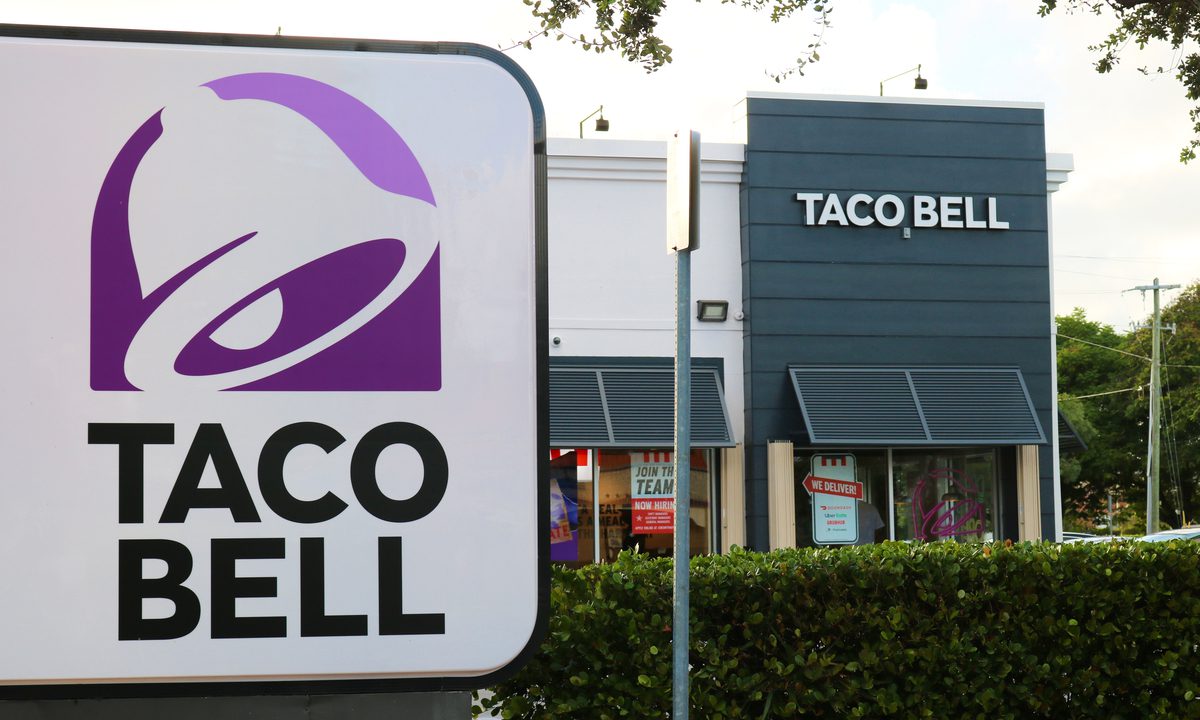Taco Bell COO Sheds Light on Drive-Thrus Becoming Drive Unders

With the dramatic shifts in restaurant customer behavior seen in the past couple of years, major brands are rethinking their store formats to target the needs and expectations of the new digital diner.
From pickup-only locations to virtual brands to mobile-integrated, drive-thru formats, quick-service restaurant (QSR) chains are shifting their focus away from the dining room toward increasingly popular off-premise channels.
Taco Bell, for its part, has been especially playful with restaurant design. In the spring, the brand opened a kiosk-powered, digital-only restaurant in Times Square, and now the taco chain is turning its focus to the drive-thru. The “Taco Bell Defy” concept, originally announced last summer, opened Tuesday (June 7) in Brooklyn Park, Minnesota.
See also: Taco Bell Restaurants Will Keep Getting Smaller, Says COO
The two-story model has the kitchen positioned on the second level above the four-lane drive-thru, and orders are sent down to customers via a vertical lift (essentially a mini food elevator).
“We believe what the new drive will become in the future … is a technology-reliant operating system that merges both the order and the pickup point into one, which creates less waits for consumers, creates an opportunity to go in places where we didn’t think we could get into and … creates the potential for the perfect drive thru experience,” Taco Bell Vice President and Chief Operating Officer Mike Grams told PYMNTS in an interview.
Take It From the Top
Lee Engler, CEO of Border Foods, the franchisee behind this restaurant design, recalled to PYMNTS that the initial idea for this new format was born out of the challenges the franchisee saw at its drive-thrus in the early stages of the pandemic.
“We had to figure out a way to approve the throughput when dining rooms were closed and 100% of our business was coming through our drive-thrus,” Engler said. “It was easy to order because we have multiple points of access in terms of the web, the app, drive through and third-party aggregators, like DoorDash. But clearly the problem still remained that everyone went in the same place to pick up their food.”
He noted that he and his brother and business partner brought up the issue to a friend who does design work for major retailers, and from this outside perspective, the friend came up with the idea to raise the kitchen. Border Foods and creators from design firms Workshop and PD Instore brought the concept to Taco Bell leadership and received the go-ahead.
The model features a traditional drive-thru lane, check-in screens for digital orders and options for third-party delivery drivers.
Doubling Up
The mobile ordering double drive-thru is a concept that has been around for years. As far back as 2018, Dunkin’ was piloting a mobile pickup lane, and brands ranging from Shake Shack to Burger King to Chipotle have used similar formats.
“In the old days, … [we] used to … try to build the largest stack possible, anywhere from seven to 12 cars long, [we] would line them up and try to work really hard to be fast at the order point and fast at the pickup window,” Grams said, adding that today’s customer is no longer willing to wait. Instead, they expect a seamless, convenient experience.
Certainly, consumers have a lot of options when it comes to drive-thru ordering. About half of all restaurants offer drive-thru pickup, according to data from PYMNTS’ 2022 Restaurant Friction Index, created in collaboration with Software-as-a-Service (SaaS) customer experience management (CXM) solutions provider Paytronix. The study, which drew from a survey of more than 500 managers of quick-service restaurants (QSRs) and full-service restaurants (FSRs) across the United States, found that almost two-thirds of those that do not offer this ability plan to invest in adopting the feature in the future.
Read more: Loyalty Programs Best Way to Get Diners to Spend More
Some brands are trying out drive-thru only locations, looking to invest their resources in the most in-demand ordering channels. Most recently, Tim Hortons announced Monday (June 6) the launch of a small-format, drive-thru-only model, which will open in a handful of states later this summer.
Up, up and Away
Grams said he expects that, as restaurants continue to seek out ways to reduce their footprint while maximizing their ability to meet demand, more brands will follow in Taco Bell’s footsteps. He said he believes more store designs will emerge leveraging vertical formats to optimize their use of space as opposed to relying on the traditional drive-thru model with the kitchen next to the windows.
“[In five years,] I think you’ll find exactly what you’re seeing here,” he said. “This will be replicated — vertical, easy ordering and pickup, combining some of those interaction points. You’ll see more pickup windows for the walk-up business where people want to eat in their car. The same trend will … just be continued to be accelerated.”
